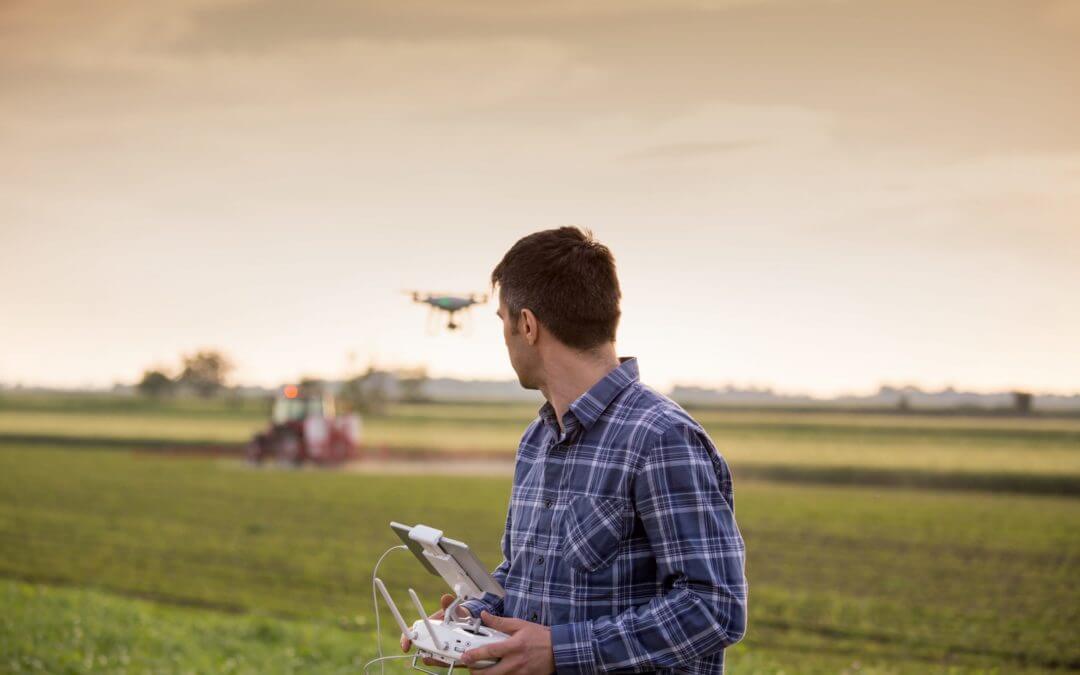For organisations that have never used a drone, it might be thought they are just a remotely operated “flying device”.
However, drone professionals, organisations, and users of varied unmanned air vehicles know that the value of this advanced technology extends to many useful drone applications and view the data collected by drones as extremely helpful.
Businesses in the fields of agriculture, construction, infrastructure, maintenance and repair, etc. have been empowered with UAVs to capture and collect heaps of quality data in real-time, which improves efficiency.
Drones transmit valuable data via encrypted, high-bandwidth data links. When this transmission is interrupted or impossible due to distance or environment, satellite communications are used to speed up the process.
For instance, Boeing Insitu’s ScanEagle used by several countries has successfully received ground control station data from a range of over 28km and relayed that data to personnel located an additional 10km away.
What you should know about the types of drone data
- Information received via sensors
We generally use many types of sensors in our daily lives. Today, companies have started installing sensors in UAV technology to diversify drone applications. A drone can have many types of sensors to collect information, such as changes in speed, distance, temperature, wind, chemical signals, light, sound, and can even identify the presence of magnetic objects. - Images
Aerial photography is one of the interesting drone applications that has been helpful for many organisations and industries. A farmer can use drones with thermal, infrared, or HD imaging capabilities to capture clear images of his crops. Similarly, filmmakers can use drones to shoot stunning images for filmography. Public institutions find it useful for planning a city’s infrastructure. Drones with cameras are also proving to be very helpful to study the behaviour of wildlife and marine animals. - Voice and video communications
Voice and video communications are the next points of focus to power up many activities in the operations sector. For first responders, emergency services, and search and rescue missions, uninterrupted communications are important. However, low coverage or damaged network infrastructure impacts efficiency and slows down response time. Drones that use automated voice technology for the transfer of information and routine communication play a crucial role in the success and safety of missions. - Location and navigation
Drones equipped with GPS trackers and radar are used for navigation and location-sensing during mapping, surveillance, geospatial exploration, etc. With this significant drone application, unmanned aerial vehicles can be tracked to reduce the chances of losing them due to unforeseen circumstances. Whether remotely operated or autonomous, UAVs with GPS systems play an important role in collecting and sharing precise information.
Conclusion
Drones are not bound by physical limits and continue to undergo many changes and advancements. In hard-to-reach areas and places where someone cannot be present physically, drone technology has stepped up to share real-time insights like never before and has completely transformed the way decisions are made today.
In the recent past, information storage, analysis, and optimisation have been made easier with edge and cloud computing. With the data received from drones, there are many new platforms and systems that help businesses reap benefits for their operations and goals in everyday life.
We can help you with your drone program needs
Every new day brings with it a new, life-changing, and beneficial application for drones in all of these spaces and other industries too. Whether it is to save lives, make life easier, or to improve efficiency, drones take the lead in this new decade.
With the ability to collect unlimited data, decrease operation times and as a new eye on every aspect across industries, the benefits continue to increase.
If you have drone requirements, get in touch with Mirragin at admin@mirragin.com.au.
Or to find out more about drones and their future in business, subscribe to our podcast.

